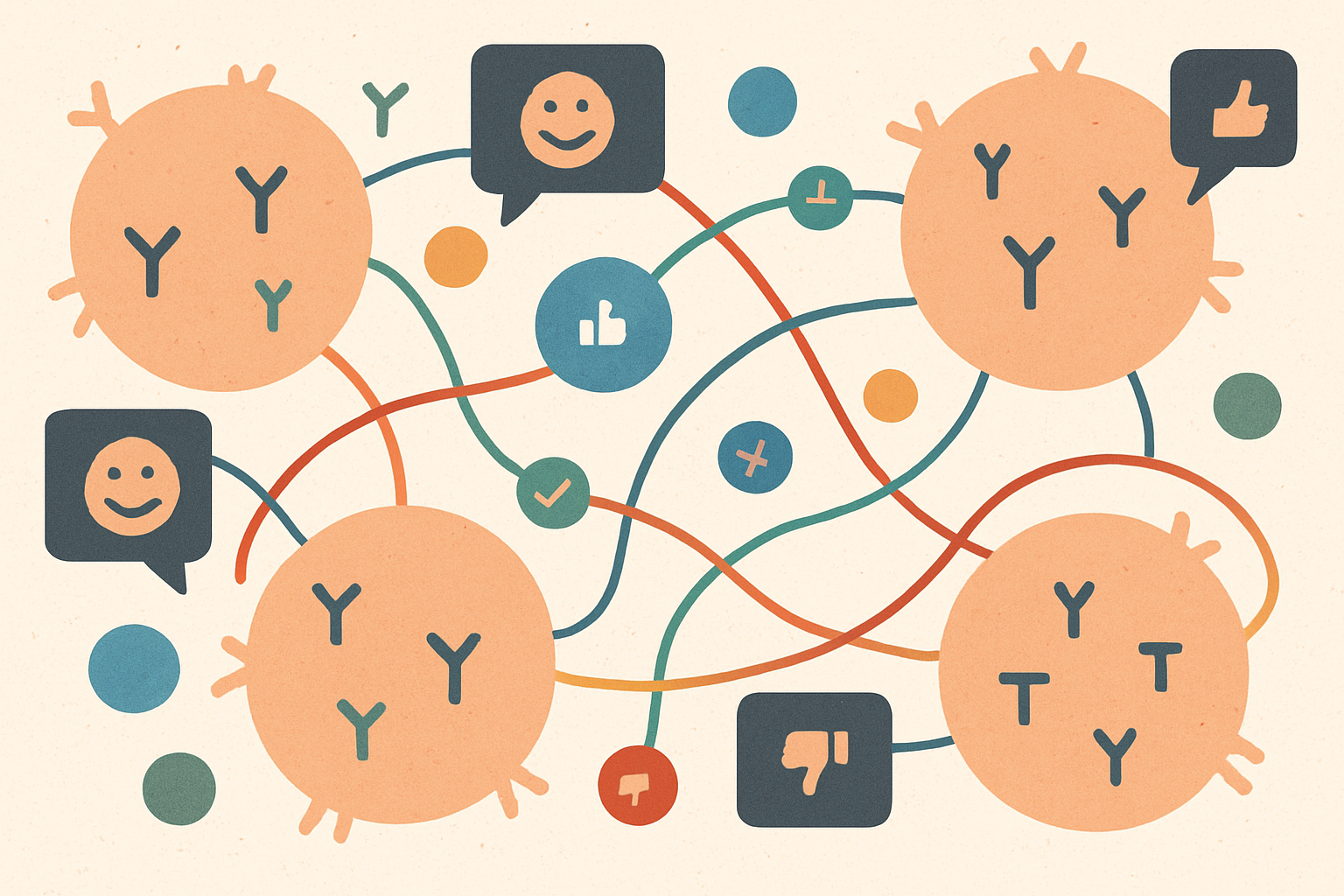
Picture a busy group chat when someone drops surprising news. A few people react, others reply to those replies, and suddenly the whole thread lights up. Perelson describes our immune system in a similar way: antibodies and immune cells “talk” to each other, sending excitatory and inhibitory signals across a network first imagined by Niels Jerne. In Jerne’s simple math sketch, each kind of cell can be nudged up or down by others—like replies that either hype or hush the chat. That idea sparked decades of research to understand how such a conversation remains helpful, rather than spiraling into chaos.
To see why your body can recognize so many different “news items,” Perelson uses “shape space,” a way to picture how well antibodies fit what they’re trying to bind. Imagine a giant dartboard where every throw lands somewhere; each antibody covers a small circle around its spot, so a handful of well-placed circles can cover most of the board. With reasonable numbers, that coverage becomes impressively comprehensive: as the repertoire of different antibodies grows to around a million, almost every random target is identified. It’s a neat takeaway for everyday life: your immune system doesn’t rely on one perfect key—it keeps a messy but effective key ring so something usually fits.
However, a giant group chat can become overwhelming. Here’s the clever part: Perelson shows there’s a “phase transition,” a tipping point where connections suddenly link up so well that a signal can ripple almost everywhere. Using a simple lattice argument, he explains there’s a critical threshold for connectivity; below it, messages fade in small clusters, above it, they can sweep the network. Practically, that means your immune system is wired to catch threats, but it also needs brakes so it doesn’t overreact to every ping. In animals, estimates suggest the expressed repertoire sits on the “highly connected” side—powerful, but in need of good control.
So how does the chat stay useful? Perelson and colleagues argue for balance: stable, but not too stable. Too rigid and you miss important alerts; too twitchy and you burn out. Their shape-space models show patterns form best when activation is specific and nearby, while inhibition is broader—think close friends who nudge you, plus a quieter, system-wide “let’s chill” tone to avoid chaos. That balance also helps explain immune memory: some clones can stay elevated without constant drama from the rest of the network. For daily life, the message is clear: your body’s defenses work through diversity, smart thresholds, and healthy restraint—built to learn, remember, and react without turning every notification into an alarm.
Reference:
Perelson, A. S. (1989). Immune Network Theory. Immunological Reviews, 110(1), 5–36. https://doi.org/10.1111/j.1600-065X.1989.tb00025.x
Privacy Notice & Disclaimer:
This blog provides simplified educational science content, created with the assistance of both humans and AI. It may omit technical details, is provided “as is,” and does not collect personal data beyond basic anonymous analytics. For full details, please see our Privacy Notice and Disclaimer. Read About This Blog & Attribution Note for AI-Generated Content to know more about this blog project.